How To Get From Tokyo To Nikko With The Nikko Pass

Do you want to venture into the mountains of Japan and be greeted by wild monkeys? Is seeing the famous shrines and temples hidden away in the forest on your bucket list? Maybe take a walk along the historic Shinkyo Bridge? You can find this mystical place only two hours away from Japan’s largest city. Here’s how to travel from Tokyo to Nikko, including everything to do in Asakusa, things to do in Nikko, and everything in between.
From Tokyo to Nikko, my latest Japan trip was a major success. However, I’ve been to the country numerous times I have yet to put on a beautiful kimono and take a daytime jinrikisha ride around Tokyo’s most famous temple, Sensō-ji. Then only two hours away by train, I could delve deeper into Japan’s more spiritual side in the small town of Nikko.
I had only heard of its existence recently, but with it being so close to Tokyo, there’s no excuse not to go! Nikko once was a sacred land of mountain worship, and now is where you can enjoy beautiful national forests, waterfalls, hot springs, amazing culture, and world heritage sites. Here’s how to experience the best of city life and quiet mountain life in one trip.
How to Get from Tokyo to Nikko?


Nikko is just a short two-hour train ride from Tokyo. One of the best and most direct ways to get to Nikko from Tokyo is with the Tobu Limited Express. The train departs Tokyo from Asakusa Station and Tokyo Skytree Station frequently. It’s an extremely comfortable, quick, and seamless way to get to Nikko.
There are no transfers on the limited express which saves the headache of navigating Japanese transit systems and lugging your suitcase around. A round-trip ticket with transfers is included in the Nikko Pass, however, I will touch more on the Nikko Pass at the bottom of this article.
A Perfect Tokyo to Nikko Itinerary

Most visitors to this region of Japan will enter the country via Tokyo. Tokyo has two main airports, Narita and Haneda. Both are popular airports and well connected by train to the city center. A popular area to stay in Tokyo is Asakusa. As I knew that I was headed to Nikko, I based myself in Asakusa while in Tokyo so that I would be near the train station when departing to Nikko.
However, Tokyo is a fantastic city that is well worth exploring if you have the time I recommend spending at least three days (but preferably five) in Tokyo at the start or end of your Japan trip.
The area of Asakusa needs at least a full day to wander around and see the sights! I mean, this area was once the entertainment and shopping district during the Edo Period. Now it still embodies Japanese culture and may even transport you back in time. There are tons of things to do in Asakusa for all.
Things to do in Asakusa
1. Senso-Ji Temple

One of the top things to do in Asakusa is to go see Senso-Ji Temple. Senso-Ji is an ancient Buddhist temple, Tokyo’s oldest temple to be exact. Dating back to 645 AD, this temple is absolutely beautiful.
You can’t miss Kaminarimon or “Thunder Gate,” which marks your entrance into the temple. A stop here is worthwhile but beware of the crowds. Next to the temple is a five-story pagoda which you can’t go into but can easily take many beautiful photos!
Nakamise-Dori, a street leading from the Thunder Gate to the main temple, leads up to Senso-Ji. This is 250 meters of pure Japanese shopping bliss. You’ll find anything from children’s trinkets to delicious Japanese sweets as you approach the temple.
My biggest tip for visiting Senso-Ji is to arrive right around sunrise or after sunset. It’s one of the busiest tourist stops in all of Tokyo and has year-round crowds.
2. Try on Kimono


One of the best things to do not just in Tokyo, but all over Japan is to try on kimono. A kimono is the national dress of Japan and was the traditional dress dating back over 1000 years. Now they are mainly worn to formal events, by older Japanese men and women, geisha, maiko, and sumo wrestlers. However, a very common thing for visitors to do is try one on for the day.
This is a very special experience that one can only have in Japan. I decided to try kimono for the first time ever with Yae Japan in Asakusa. Packages start at ¥5900 and go up from there depending on your kimono rental. All kimono rental packages include the garment, accessories, and hairstyling. I arrived in regular clothes and left feeling like a Japanese beauty with a large amount of bystanders asking to take my photo.
Allow one hour to get ready in full kimono gear as it takes the ladies time to get you all dressed up. It’s quite a process, but an interesting one at that. Afterwards you have the kimono until 17:30 and can run around Asakusa snapping all the beautiful photos you want!
3. Take a Jinrikisha Ride


Another fun thing to do in Asakusa is take a Jinrikisha Ride (meaning “man-power-vehicle”) around the area. A jinrikisha is a two-wheeled cart pulled by by a rickshaw driver. It was once a very popular way to get around in Japan in the 1800s and 1900s, but now it mainly serves as a special experience for visitors to try.
You definitely cannot miss the jinrikishas strolling around Asakusa, and one step in Senso-Ji and you’ll quickly find the cute rickshaw drivers vying for your business. This is a fun activity to combine with a kimono rental. It’s a great way to feel like you’re living in olden day Japan. Jinrikisha rides can accommodate two people and usually cost about 8000 for 30 minutes.
4. Tokyo Skytree
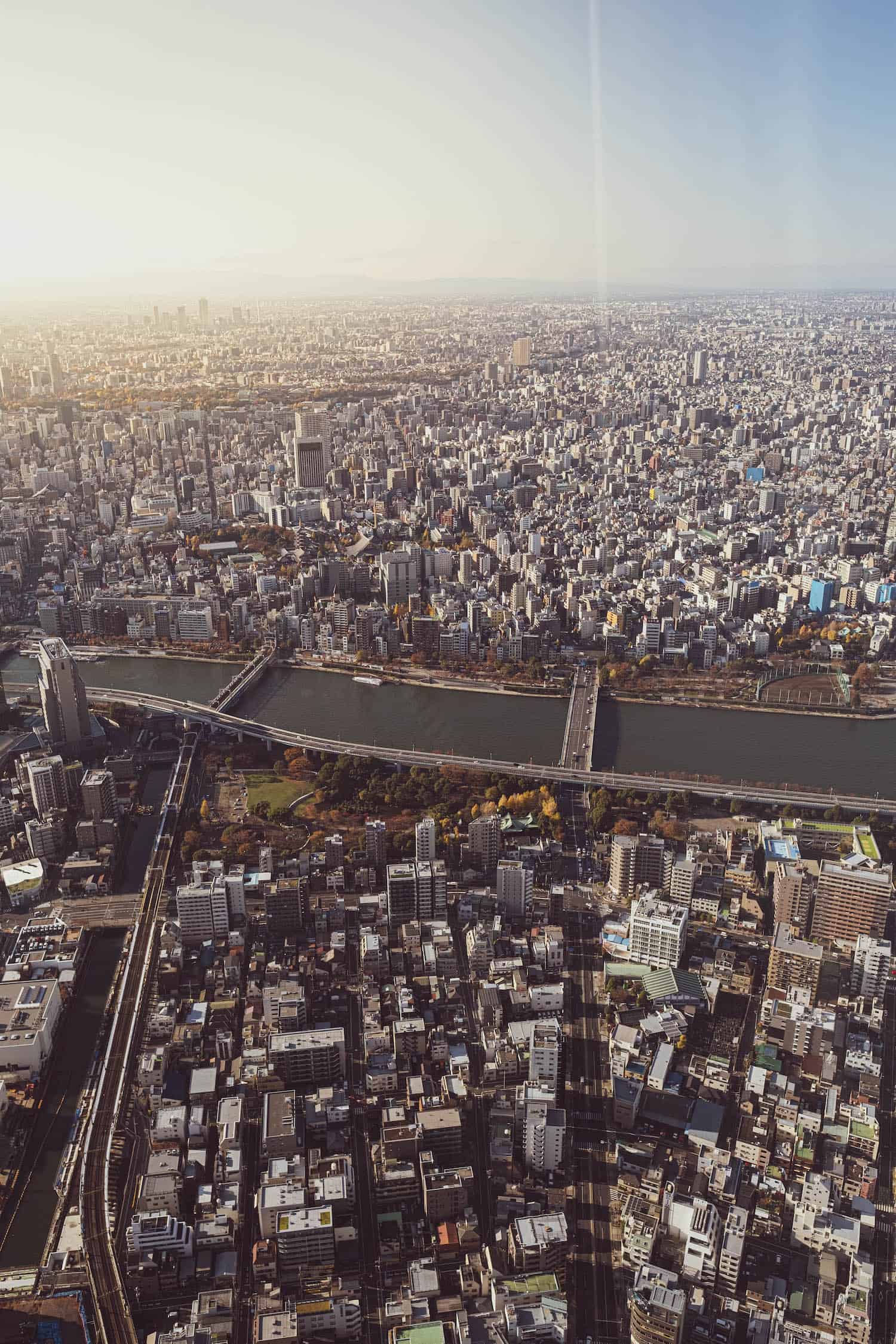

Only a 15 minute walk away, or one station away from Asakusa on the Tobu line is the Tokyo Skytree. This building towers over the city at 634 meters. It’s height actually makes it the second tallest structure in the world after the Burj Khalifa in Dubai.
It’s an impressive site to see from the outside, but it’s well worth taking an afternoon to go inside the Tokyo Skytree and see all it has to offer.
The highlight of the Skytree is going to the observation decks. There are two to see, the Tembo Deck at 350 meters and the Tembo Galleria at 450 meters. If you want to see both make sure you get the combo ticket. Foreigners get a fast lane pass, but make sure to see the up to date prices here.
The views over Tokyo from here are amazing, and on a clear day you can even see Mt. Fuji. Afterward head back down to Solamachi Shopping area. There are some very unique Japanese shops with one of a kind items you can only find in Japan! In the Tokyo Skytree complex, you can also find the Sumida Aquarium, try Daruma Tsukishima Honten, or treat yourself at the Musashi Sky Restaurant.
*Note: In 2020 TOKYO Mizumachi, a footbridge along the Sumida River will open and is another way to enjoy the Tokyo Skytree and it’s surroundings.
5. Other Things to do in Tokyo


Take in the Views of Shibuya Crossing: The world’s busiest crosswalk needs no introduction. It’s best to head here around sunset for the best views over this crosswalk. First take a few walks through the crosswalk and then head to one of the four corners and get high and watch the action.
Teamlab Borderless or Planets: The Teamlab museums are both digital art museums that have become somewhat of a revelation in Tokyo and now have spread around the world. Head here for a fun few hours of immersive art installments.
Enjoy a Sento: A Sento is a Japanese public bathhouse. They are an essential part of Japanese culture and are welcoming to foreigners.
Eat Your Way Around Tokyo: Japanese food is some of the best food in the world, and Tokyo has it all. Why not make it a point to try all the udon, ramen, sushi, tempura, and everything in between that you can!?
Where to Stay in Tokyo?

Just one stop away from the Tokyo Skytree is the Tobu Hotel Levant. I was able to spend a night here and loved it. The hotel provides visitors with a convenient location and stellar views over the city. Definitely try to get a room with a view out to the Skytree. Or book a nice dinner at their Skytree View Restaurant REN. They serve up modern Japanese food in an upscale environment.
An Introduction to Nikko

Nikko is a historic and peaceful getaway only 150 km away from Tokyo, but in all honestly it feels like a world away. Foreigners and Japanese alike have flocked to Nikko since the 19th century. In search of the serene beauty that you can find in the forest, mountain, and Lake Chuzenji.
It’s a great holiday destination that provides foreigners with a deeper insight into Japan. It’s one of the most well known places in the Kanto region and comes alive during the autumn months when the trees turn orange, yellow, and deep red.
Nikko is also where the “Three Wise Monkeys” is from. Hidari Jingoro carved the three monkeys (see no evil, hear no evil, speak no evil) into Tosho-gu shrine. You’ll see symbals of these monkeys everywhere when visiting.
Things to do in Nikko
1. Nikko Tosho-gu
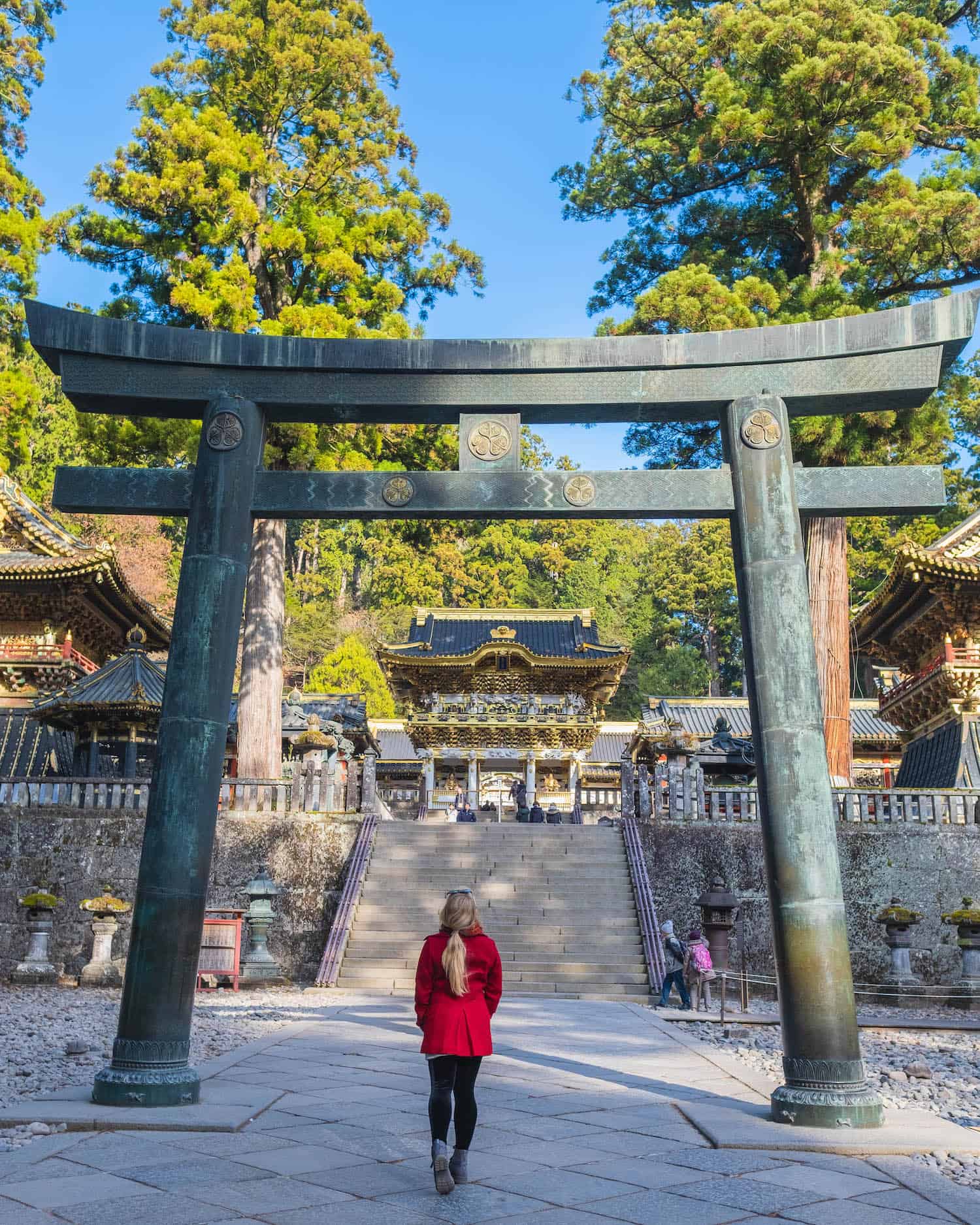

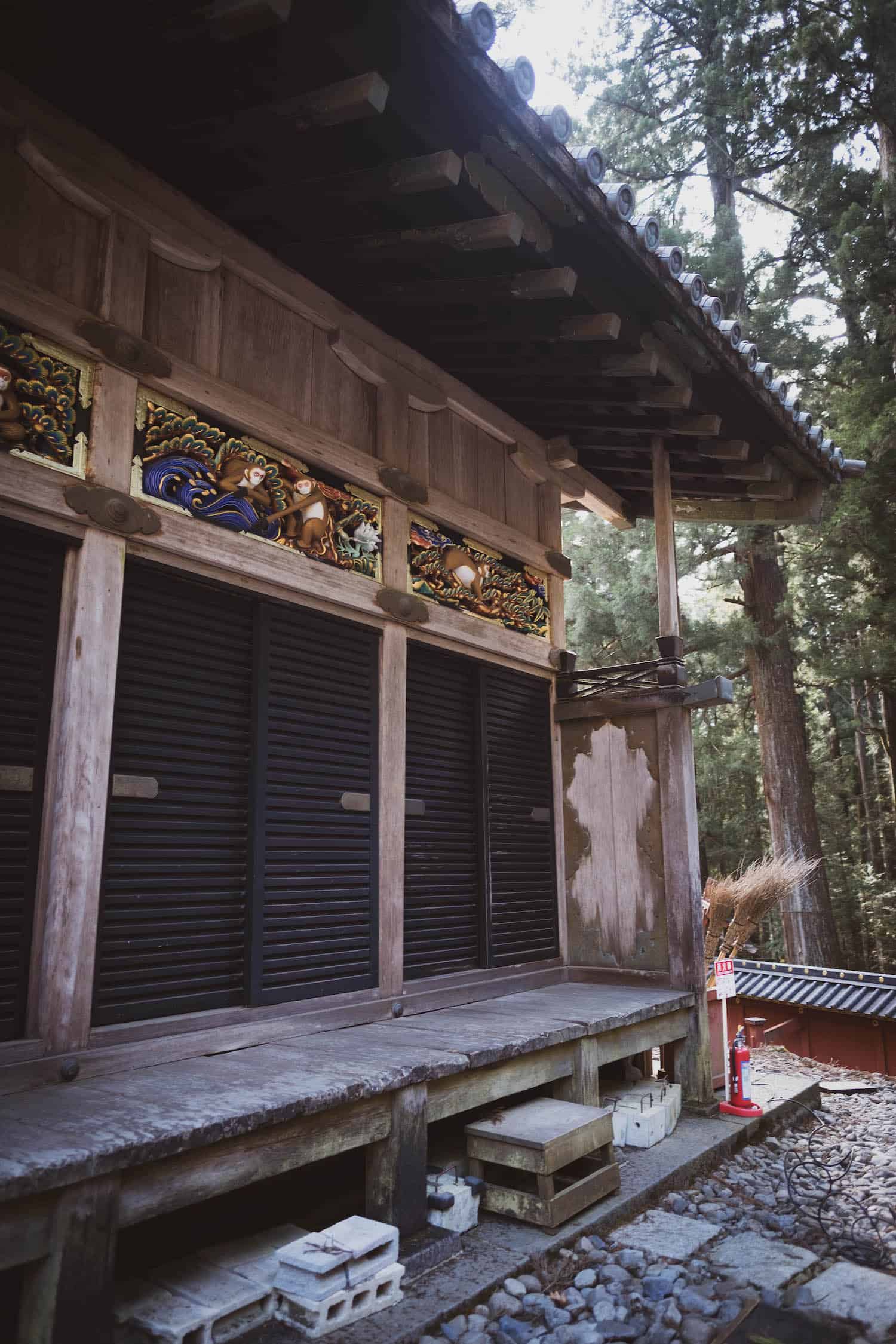
Without a doubt the top thing to do in Nikko is visit the world heritage site that is the symbol of Nikko. Tosho-gu shrine is where the very first shogun, Tokugawa Ieyasu, was enshrined.
It’s here that you can come and see this mausoleum for yourself. Tosho-gu isn’t just the mausoleum though, it’s a lavish complex of spectacular buildings deep in the forest. Make sure to stop by the five-story pagoda and the Three Wise Monkeys carvings. The whole area will take at least an hour to explore so make sure to allow enough time for this site.
2. Rinno-Ji Temple

Right next to the Nikko Tosho-gu complex is Rinno-Ji Temple. This is another glorious piece of Japanese architecture. It’s beautiful on the outside, but you will have to head inside to get a glimpse of the three 7.5 meter tall Buddhist statues.
3. Shinkyo Bridge


Perhaps the most iconic image of Nikko is the Shinkyo Bridge. This is the Sacred bridge at the entrance to Nikko’s shrines and you literally can’t miss it when visiting Nikko.
Shinkyo Bridge is a famous bridge not only in Nikko, but all of Japan. The bridge dates back to 1636. Being that it’s so old and historic there is a fee of ¥300 to walk across the bridge. Although you can see the beauty from the road as well!
4. Kegon Falls

Kegon Falls is another fun thing to see in Nikko. This is a huge 97-meter waterfall and is the only exit of Lake Chuzenji. When there is heavy rainfall, this is a sight to see, especially in the fall when the colors are ablaze. There are two main viewing platforms to safely enjoy this Japanese waterfall.
5. Akechidaira Ropeway

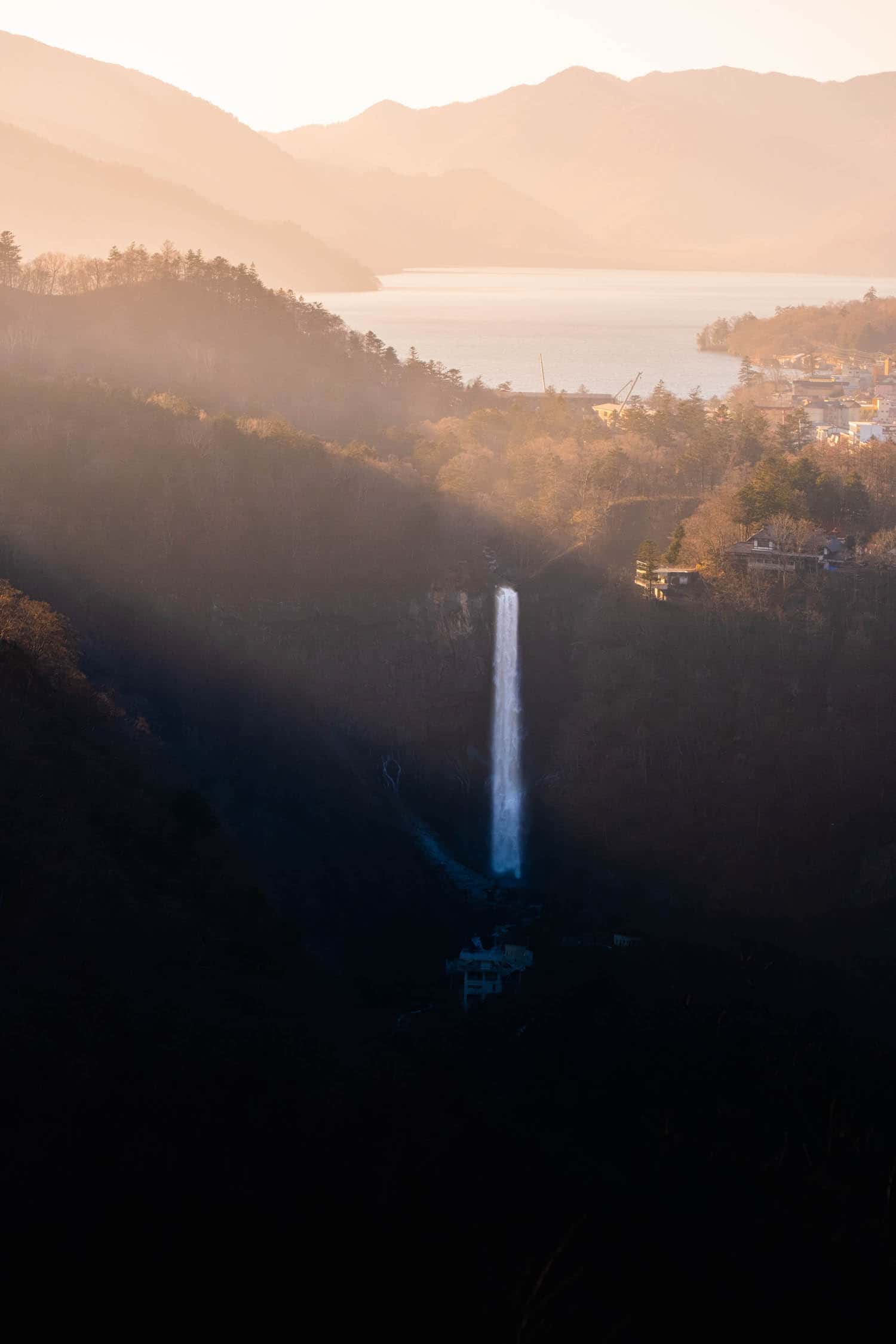
It’s said that the view from Akechidaira lookout is the best in all of Nikko. You can easily get to the ropeway with the Nikko All Area Pass. Once there, to access this lookout, you have to take a short three-minute ropeway, only fit for a few people, to the top.
The whole ride provides epic views over Nikko National Park. Make sure to look out to your right when going up for a view of the Irohazaka Winding Road.
6. Lake Chuzenji


What makes Nikko National Park really a shrine is Lake Chuzenji. This scenic lake is nestled at the foot of Mount Nantai, Nikko’s sacred volcano. Chuzenji is a huge lake that has a depth of 163 m. During the summer, you can take a lake boat cruise and enjoy the views. The price of this cruise is included in the Nikko All Area Pass (more info at the bottom).
7. Kanmangafuchi Abyss


Head out to the outskirts of the town of Nikko to see the Kanmangafuchi Abyss. Here you can feel at peace along a scenic glen, filled with small waterfalls and winding rivers. As you walk further in you’ll find many Jizo statues. These Jizo statues care for the dead and overlook the river.
There are about 70 of them, but no one knows the exact number for sure because it’s said that if you try to count you always end up with a different number, as the Jizo often disappear.
You’ll see that the Jizo statues are decorated in red capes and scarfs by the locals. I was happy I had my red jacket on when visiting so that I could blend in with the locals!
8. Nature Walk Around Nikko National Park

Nikko is famed for its mountains and beauty, so it’s best to venture outside as much as you can while in the region. Taking a hike to places like Lake Sainoko and Lake Chuzenji is good for the soul. Keep your eyes open – you may get lucky and a glimpse of the many deer and Nikko monkeys in the park.
9. Yumoto Hot Spring

Have you heard of a Japanese onsen? Visiting a Japanese Onsen while in Japan should be at the top of your things to do in Japan list! An onsen is essentially a Japanese hot spring where visitors are separated by sex and can soak naked in the warm water, usually outside.
It’s incredibly relaxing especially during the winter months. It is also a unique cultural experience to be had. As Japan is a volcanically active country, there are thousands of onsens scattered throughout. Yumoto Hot Spring is one of those places where you can find an onsen.
Yumoto, meaning the “origin of hot water” is right next to Lake Yunoko, meaning “hot water lake.” Yes this town is the source of hot natural mineral water that the onsens use. Yumoto hot spring town is located in Okunikko, about 45 minutes away from the town of Nikko. In the winter the whole area looks as Japanese as you could imagine!
10. Yudaki Falls
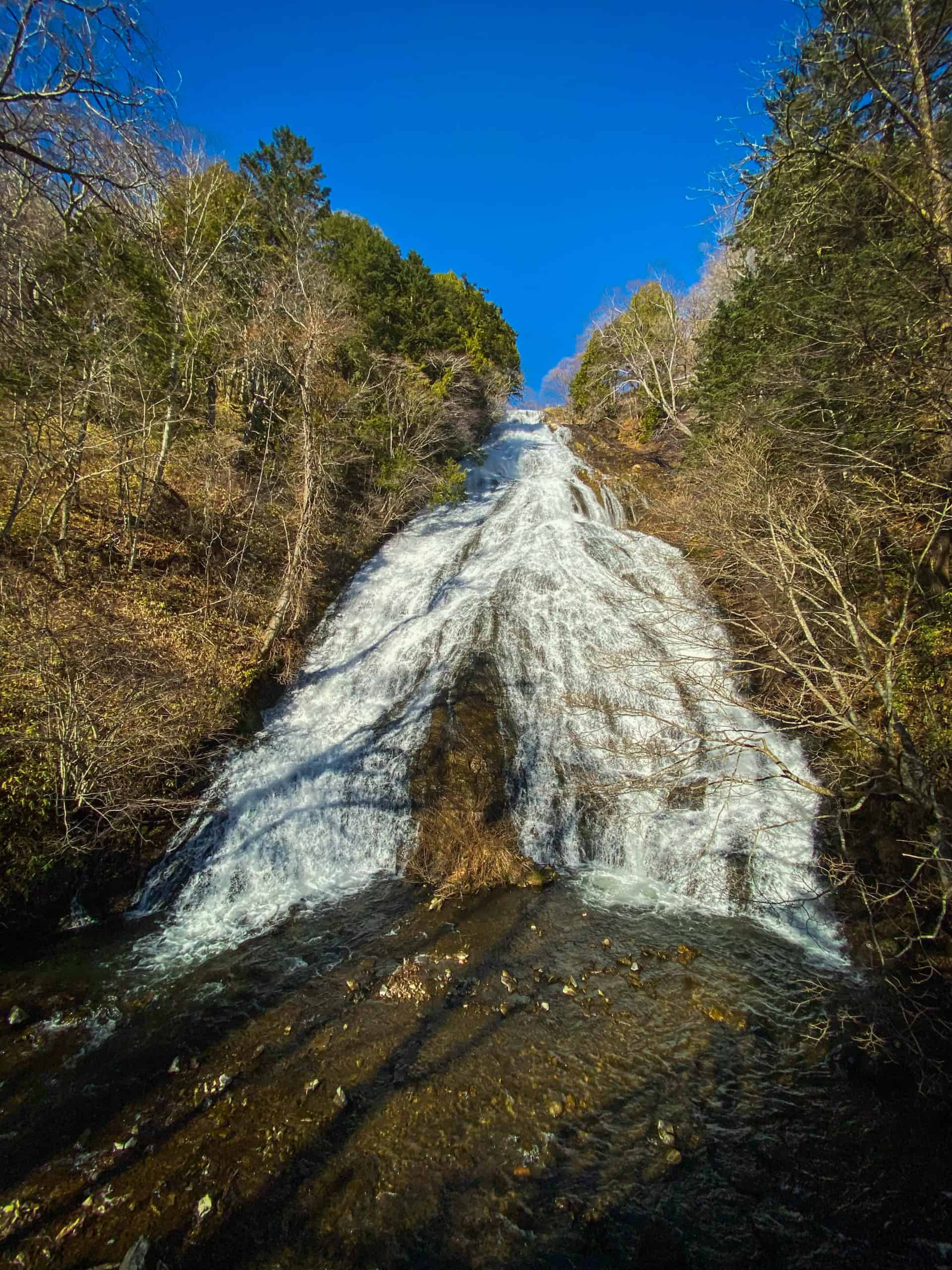
Yudaki Falls is another fantastic waterfall to visit in Nikko. When we were with our nature guide he mentioned that Yudaki wasn’t quite as impressive as Kegon Falls, but I actually found it just as special, and lesser-known.
Yudaki is over here 70 meters high and beautiful to see. Try to get here in the Autumn when the colors around the falls will blow you away.
11. Try Yuba
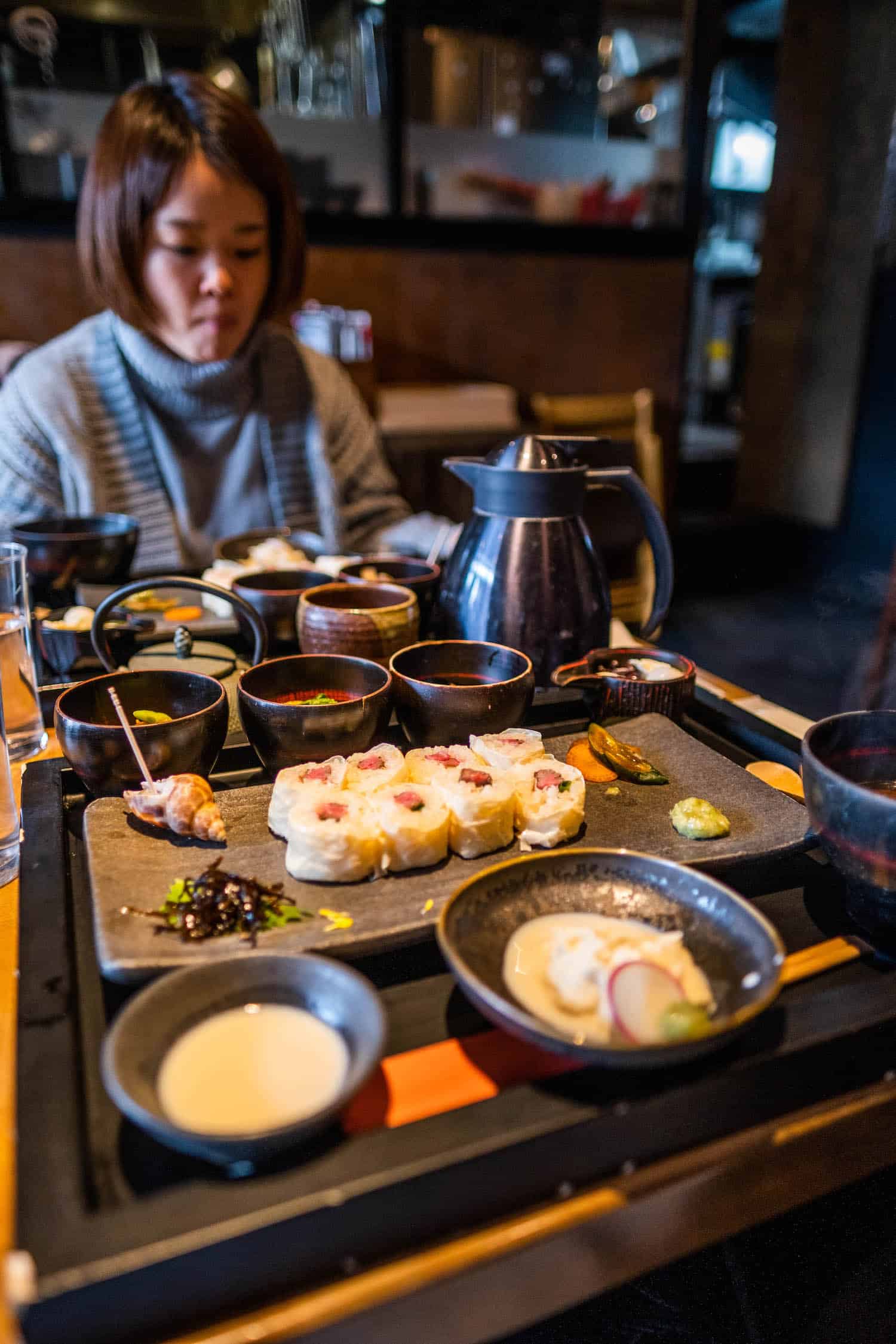
Nikkos is famous for it’s Yuba. What is Yuba? Yuba is essentially tofu skin, and you can find it almost everywhere in Nikko. It’s said that it is so good in Nikko because the water from this natural part of the world is exceptionally clean. Even if you’ve had Yuba in Kyoto, it’s best to try it again here as Nikko Yuba is twice as thick as Kyoto Yuba!
I can confirm that yuba is absolutely delicious. I had it every day on my trip to Nikko and am still dreaming about the day when I can enjoy it again. Two things you should definitely try are yuba sushi at Nikko Yubamaki Zen and yuba sashimi at なんたい.
12. Hongu Cafe


If you’re in the mood to chill our while in Nikko a good place to go is Hongu Cafe. Nikko Hongu Cafe is a cute coffee and tea shop in an old 300 year old building near the shrines, and just past the Shinkyo Bridge. They have Japanese sweets and matcha lattes, but the best part about this place is the relaxed atmosphere.
13. Shaved Ice at Shogetsuhimuro

Make your way to Shimo-imaichi Station to try some shaved ice at Shogetsuhimuro. This isn’t just any old shaved ice though, it’s Nikko shaved ice and is said to be some of the best in the world.
This shaved ice is directly managed by the natural ice manufacturer and, like yuba, tastes so delicious because of the mountain clean Nikko water. In the summer season be prepared to wait in a long line of soon to be happy customers.
14. Eat all the Sweets in Nikko
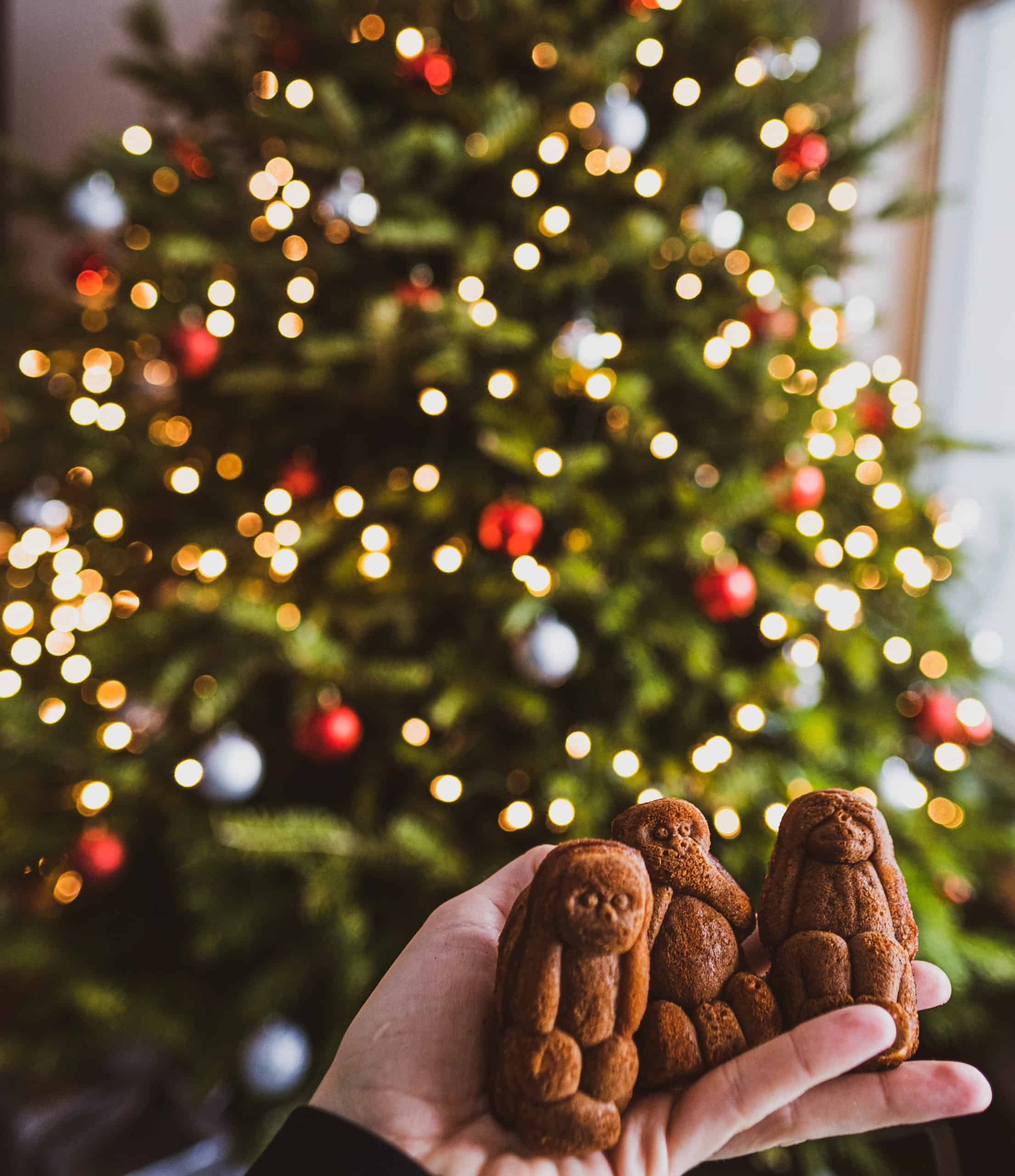

Like the rest of Japan, Nikko has some delicious sweets to be tried. Just walking up and down the main street of town will bring you past plenty of delicious looking options.
Make sure to try the famous three monkeys Ningyo Yaki from Nikko Ningyo Yaki Mishimaya. They make great souvenirs from Nikko. Another favorite of mine was custard-filled sad monkeys from 雲IZU 日光店
How to Get Around Nikko – The Nikko Pass

There are so many amazing things to do in Nikko you’re going to need to be pretty efficient with your time. The best way to get not only to Nikko from Tokyo, but also all around Nikko is with the Nikko Pass.
The Nikko Pass all area last for four days and includes free travel on Tobu buses in Nikko. Anytime you want to go to one of these sites on this list the Tobu bus will get you there. You just need to flash the bus driver your Nikko Pass when departing the bus.
The Nikko Pass also includes All Tobu Railway lines in between Tobu-Nikko, Shimo-Imaichi, and Shin-Fujiwara stations. In addition to a roundtrip ticket from Asakusa, as well as access to the Akechiddaira Ropeway, and Lake Chuzenji cruises, and discounts at many different venues in Nikko. (Note that you’ll have to pay ¥1470 for the one way express Tobu train, but Nikko Pass holders get 20% off).
I was surprised by how comfortable the Revety Train was. Plush seats, outlets, and free WiFi? What’s not to love? It’s extremely easy and useful to use the Tobu line when traveling from Tokyo to Nikko.
The Nikko Pass is only available to foreigners and Japanese nationals who are traveling with foreigners (one Japanese per oversea tourist). It’s a great way to save some money and travel more hassle-free when spending time in both Asakusa and Nikko!
You can purchase the passes at the Tobu Tourist Center at Asakusa station or online here.
How Long Should You Spend in Nikko?
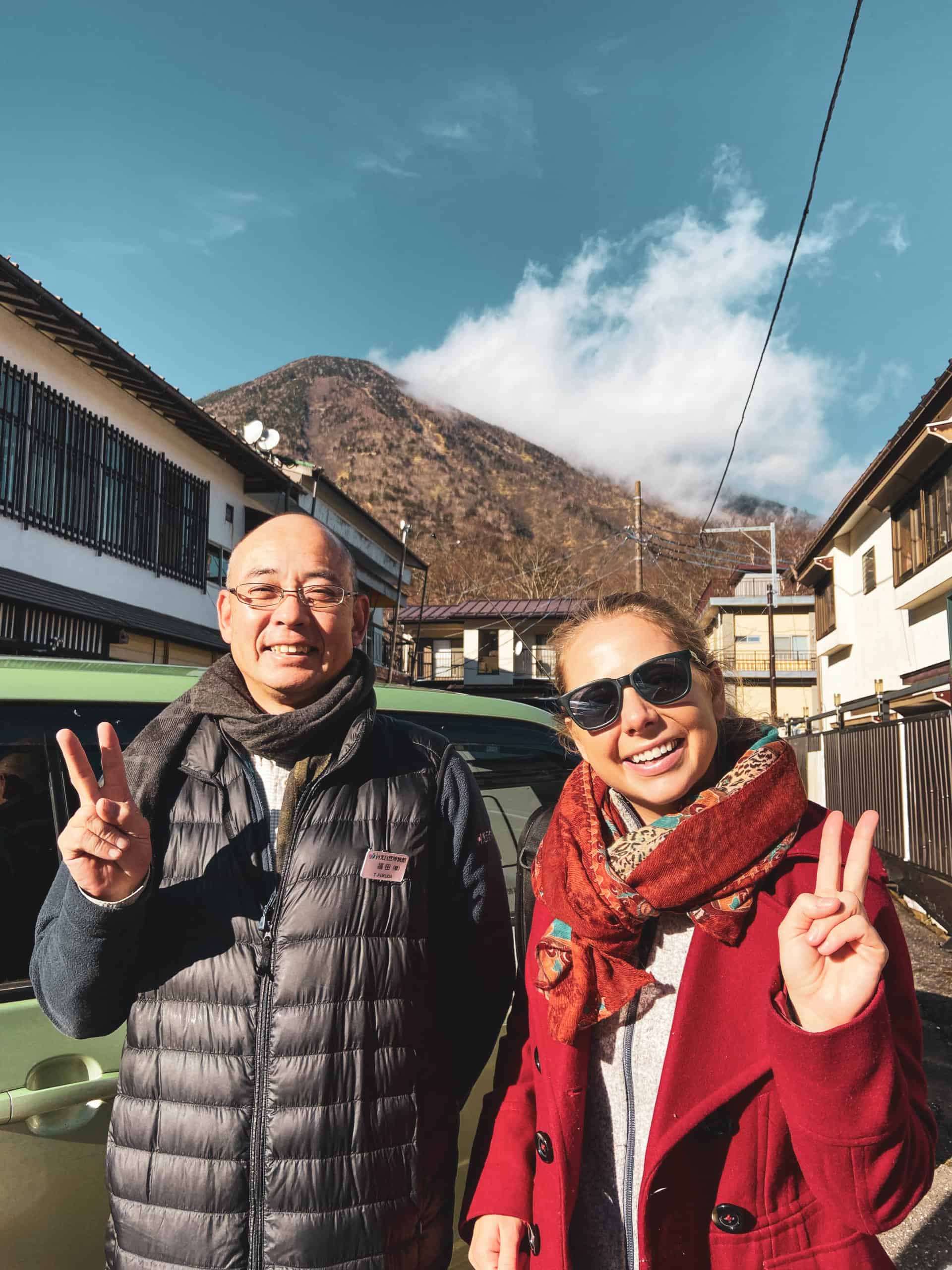
I spent three days and two nights in Nikko and thought it was a good amount of time. However, I was there in the winter. If I were visiting in the summer or autumn I would have preferred four full days to explore. Many people do a one day trip from Tokyo, but there is too much to do and see in Nikko to only spend one day at.
There are plenty of accommodation options to choose from so you can stay overnight!
Where to Stay in Nikko?

Nikko has many accommodation options inside the actual town of Nikko, in Oku-Nikko, and along Lake Chuzenji. I stayed at the historic Chuzenji Kanaya Hotel situated in a quiet and peaceful area next to the lake.
It’s a beautiful spot in the mountains with comfortable rooms, an in house delicious restaurant, and an outdoor onsen with water flowing directly from Yumoto-Onsen. It’s a great option to stay if you want to truly be in nature.
If you prefer to stay in town the Nikko Kanaya Hotel is another historic hotel where notable people like Albert Einstein, Eleanor Roosevelt, and Charles Lindbergh once stayed.

What to Pack for Japan?
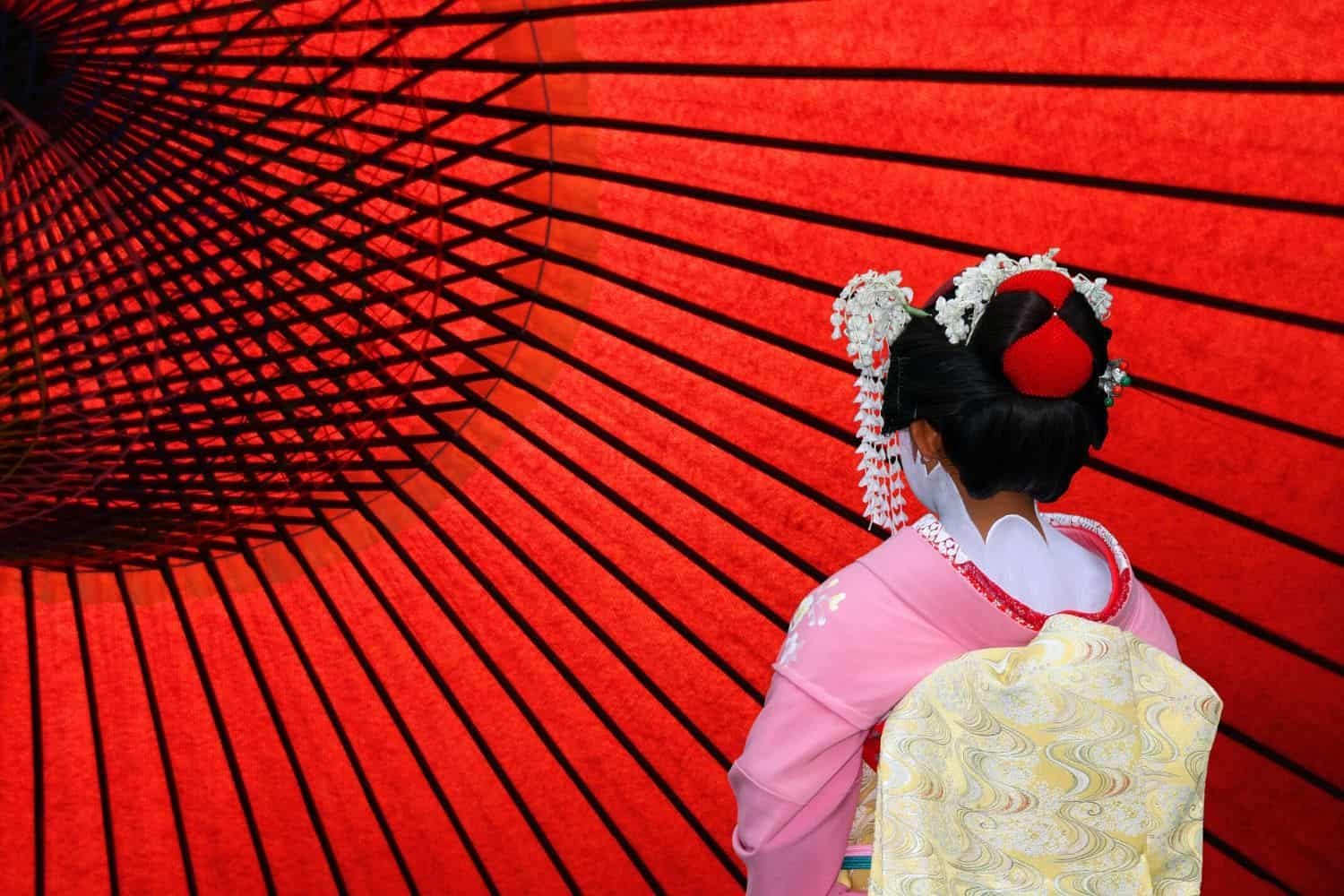
Wondering what to wear in Japan? You aren’t alone. Japan can be a very tricky country to pack for as there are so many styles you can go with, and of course, every season is different.
We’ve traveled to Japan during all their four seasons. Most of Japan is a four-season country and winter travel is vastly different than summer. Here are the essential Japan packing list items to bring with you depending on the season you visit!
Our Recommendation For Travel Insurance

We don’t travel without travel insurance, and neither should you. You never know what can happen in a foreign country, and it’s best to be prepared. HeyMondo offers excellent short and long-term travel insurance policies.
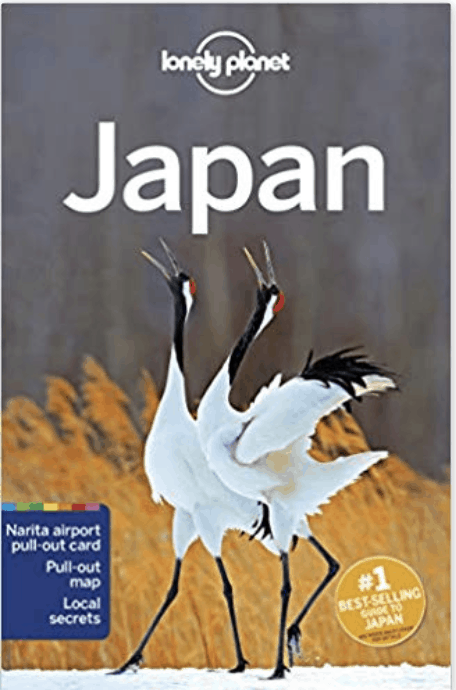
Guide Book
Sometimes it’s nice to have a real book in your hands when traveling. We recommend picking up a Lonely Planet to get you through the wireless nights.
Camera

Chances are you’ll want a camera for your trip to Japan. Our favorite pocket-sized point-and-shoot camera for quick trips is the Sony RX100V. It takes fantastic photos and videos and is the size of your palm.
To up your photography game a bit, consider the Fuji X-T3. We just bought that camera and found the images to look amazing. Check out our other travel cameras here.
Adapter

Japan mainly uses the Type A plug like North America, but there is generally no socket for the grounded portion. Make sure you find a good universal adapter like the one I have to keep you charged. Otherwise, you may struggle to find one once you land.
Travel Around Japan
- 30 BEST THINGS TO DO IN OSAKA, JAPAN
- 70+ Japan Bucket List Items to Check Off!
- 12 Amazing Waterfalls in Japan You Have to See to Believe
- 15 Best Things to do in Sendai, Japan
- 10 Reasons You Should Travel to Tohoku, Japan in 2020
- 10 Best Things to do in Niseko this Winter
- Where to Stay in Niseko in 2020
- The Best Restaurants in Niseko to Try in 2020
- How Much Does a Trip to Japan Cost? Is Japan Expensive?
- A Foreigners Guide to Japanese Sentos and Bathhouses • 22 Questions Answered
- How to Get From Tokyo to Nikko with the Nikko Pass
- 25 Best Things to do in Kyoto, Japan • 2020 GUIDE
- 31 Facts About Japan That Will Blow Your Mind
- 30 Facts about Japanese Culture That Will Blow Your Mind
- Where to Buy a Japan Rail Pass • All You Need to Know
- 15 Best Things to do in Kobe, Japan
- 20 Best Things to do in Nara, Japan • Nara Travel Guide
- Best Time To Visit Japan (2020) • Month By Month Breakdown


Hey Natasha! We’re planning our trip to Tokyo for the summer Olympics and looking for a great day trip or short city escape. How long do you recommend spending in Nikko? Love your blog by the way and Japan travel tips have been helpful! 🙂
Nikko looks so beautiful and close to Tokyo! What time of year would you recommend visiting for optimal enjoyment?
Ahhh! Cant wait for my trip to Japan this summer, thinking about adding Nikko to the list. Also do you recommend Kyoto or Osaka? We’re limited on time…
Hey Ann! It’s a great place to visit in Tokyo and perfect for a dose of nature. We love both cities, but Kyoto is a classic just be prepared for crowds.
Fall colors would make for a spectacular trip!
Three days would be ideal! However, you could probably get by with two or one. Best to stay longer than a day trip!